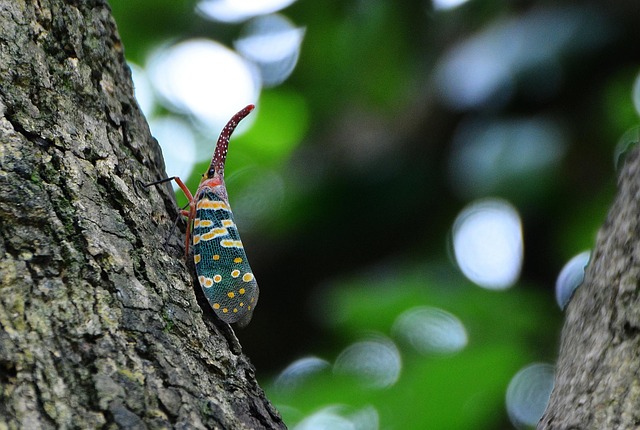Grain weevils, tiny but devastating pests, pose a significant challenge to agricultural businesses due to their preference for warm, humid conditions and ability to enter dormant stages. Effective commercial weevil extermination requires a year-round strategy combining physical, biological, and chemical methods. This includes regular cleaning, introducing natural predators, strategic insecticide use, and continuous monitoring through traps and inspections. Maintaining detailed records of these practices is crucial for refining prevention efforts and minimizing economic losses from weevil damage to stored grains.
Grain weevils can wreak havoc on commercial operations year-round, posing significant challenges to storage facilities. This article guides you through comprehensive strategies for seasonal prevention and year-round protection against these destructive pests. From understanding the behavior of grain weevils and their impact to implementing practical solutions and best practices for monitoring, learn how to effectively manage and prevent commercial weevil extermination. Discover tailored tips for continuous grain weevil control in today’s digital era.
Understanding Grain Weevils: Behavior and Impact on Commercial Operations
Grain weevils are a common pest in various agricultural and commercial operations, posing significant challenges to year-round grain storage. These small insects, often measuring less than 1 cm in length, can cause substantial damage by feeding on stored grains, leading to reduced quality and quantity of produce. They are particularly adept at infesting poorly maintained or sealed storage facilities, making them a persistent problem for commercial weevil extermination efforts.
The impact of grain weevils extends beyond mere economic losses; their presence can also contaminate grain products, affecting their marketability. Commercial operations must implement robust prevention programs to mitigate these issues. This involves understanding the behavior of the weevils—such as their preference for warm, humid conditions and ability to survive in dormant stages—to develop effective strategies targeting both active adults and dormant larvae.
Seasonal Prevention Strategies: A Comprehensive Guide for Effective Weevil Control
In the realm of commercial weevil extermination, seasonal prevention strategies play a pivotal role in maintaining grain integrity year-round. By understanding the life cycles and behaviors of weevils, pest control professionals can devise comprehensive plans to deter and eliminate these nuisances effectively. During specific seasons, weevils tend to proliferate, making proactive measures essential for businesses dealing with stored grains. A well-timed approach involves a combination of inspections, sanitation, and tailored treatment methods. Regular checks help identify early signs of infestation, allowing for swift action before weevils reproduce and spread.
Implementing preventive tactics such as proper storage practices, insect-proof containers, and controlled environmental conditions can significantly reduce weevil population. Sanitation, including the removal of infested materials and regular cleaning, disrupts breeding grounds. Additionally, leveraging natural predators or applying eco-friendly pesticides specifically targeted at weevils ensures minimal impact on other organisms. These strategies form a robust framework for seasonal prevention programs, offering businesses a proactive approach to commercial weevil extermination and maintaining the quality of their stored grains throughout all seasons.
Implementing Year-Round Solutions: Tips for Continuous Protection Against Commercial Weevil Extermination
Implementing year-round solutions is key to maintaining a robust grain storage environment and preventing costly commercial weevil extermination. Instead of waiting for an infestation, integrate proactive measures that offer continuous protection. This involves adopting a multi-layered approach, combining physical, biological, and chemical strategies. For instance, regularly clean and maintain storage facilities, eliminating potential hiding spots and food sources. Introduce natural predators like nematodes or fungi to disrupt the weevil life cycle naturally.
Additionally, apply approved insecticides during strategic periods, such as when new grain shipments arrive or before the weevil population peaks. Regular monitoring using traps and regular inspections can provide valuable insights into the presence and activity of weevils. By combining these year-round tactics, businesses can significantly reduce the risk of commercial weevil extermination, ensuring the integrity of their grain products throughout every season.
Best Practices for Monitoring and Maintenance: Ensuring Long-Lasting Grain Weevil Prevention
Regular monitoring and maintenance are key practices for implementing effective seasonal prevention programs against grain weevils. Commercial weevil extermination experts emphasize the importance of establishing a year-round surveillance system to detect any early signs of infestation. This includes periodic inspections, particularly in areas where grains are stored or processed, to identify potential entry points and verify the integrity of existing control measures. By staying vigilant, facilities can promptly address issues, preventing widespread contamination.
Proper maintenance also involves keeping storage facilities clean and well-ventilated, eliminating any sources of moisture, and securely sealing all grain bags and containers. These practices disrupt weevil breeding cycles and deter potential invaders, ensuring the longevity of prevention efforts. Additionally, maintaining detailed records of inspections and treatments provides valuable insights for refining control strategies over time, making them more tailored and efficient.
In conclusion, implementing a multi-faceted approach to seasonal prevention programs is key to achieving year-round protection against grain weevils in commercial operations. By understanding the behavior and impact of these pests, coupled with adopting comprehensive strategies and best practices for monitoring and maintenance, businesses can effectively prevent and control weevil infestations. This ensures the integrity of grains and keeps commercial weevil extermination efforts to a minimum, fostering sustainable and profitable agricultural practices.
